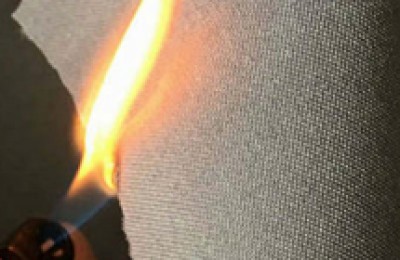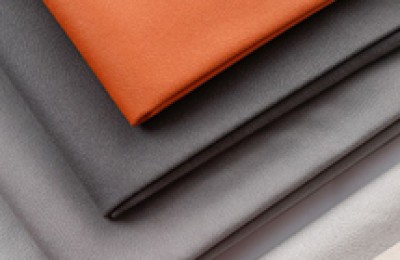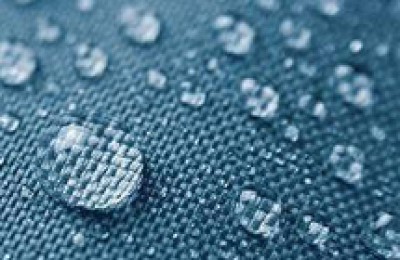As one of the main raw materials in the textile industry, cotton is an important strategic material related to the national economy and people’s livelihood, and occupies an important position in the national economy. China is the world’s major cotton producer and consumer, with both total output and unit yield ranking first in the world.
my country’s cotton industry chain involves cotton processing, circulation, textile, printing and dyeing, clothing, export and other industries. The origins of these industries can’t be traced back to a small cotton seed.
The demand gap for long-staple cotton is huge, and upland cotton breeding and improvement have become the direction
As the two most widely cultivated cotton species in the world, upland cotton Cotton has high output and wide adaptability, accounting for more than 90% of the world’s total cotton output. Sea-island cotton has low output, but its fibers are long, strong, and thin, making the woven fabric smooth, shiny, tough, and drapey. It is the top quality textile fiber and is expensive.
Because the cotton fiber produced by Sea Island Cotton is slender and tough, it is also called long-staple cotton and is recognized by the industry as “the best cotton”. “But the growth of long-staple cotton requires a lot of heat and a long period. Under the same heat conditions, the growth period of long-staple cotton is 10-15 days longer than that of upland cotton.” Chen Haodong, associate researcher at the Hunan Cotton Science Institute, said that due to the growing environment The requirements are higher. my country’s sea-island cotton is only grown sporadically in southern Xinjiang. Due to its generally poor adaptability, it is difficult to promote and apply it on a large scale.
Due to its long sunshine time, long-staple cotton has high maturity, long lint and good hand feel. Its quality is much better than ordinary cotton. Compared with ordinary upland cotton fiber, long-staple cotton has higher commercial value. Although my country’s cotton production ranks among the top in the world, my country’s cotton production also faces bottlenecks. Problems such as a single cotton type, low fiber quality and low fiber strength are prominent.
With the increasing improvement of people’s living standards and the rapid development of modern spinning technology, the demand for long-staple cotton in the domestic and international markets will continue to increase. “In recent years, the annual output of island cotton used to produce long-staple cotton in my country has only been about 40,000 tons, while the annual demand is around 160,000 tons.” Chen Haodong said that the shortage of long-staple cotton has plagued the healthy and sustainable development of my country’s high-quality cotton industry. .
“The industry generally believes that only sea-island cotton can produce long-staple cotton.” Chen Haodong said that they have always wanted to analyze the reasons for the differences in yield, adaptability and quality between upland cotton and sea-island cotton. , and tried to combine the advantages of the two to breed new upland cotton varieties with high yield, wide adaptability, and fiber quality that reaches the standard of long-staple cotton.
Breaking the negative correlation between yield and quality through distant hybridization is the key
“One of the most significant differences between upland cotton and sea-island cotton is fiber length.” Chen Haodong said that 35 mm is a hurdle and it is difficult for most upland cotton varieties to meet this standard. “In addition, the more slender the fiber, the more difficult it is to test the toughness. If the strength cannot be increased, it will be difficult to be used in production. During the breeding process, the strength of cotton silk tends to decrease when it becomes thinner, and it is easy to break during the weaving process. Only if it has both Only with these three points: long, thin and strong can we spin high-quality yarn, and high-count cotton with a count of more than 80 will often have a silky feel.”
During the breeding process, Chen Haodong also I found that sometimes when the quality improves, the output decreases. In the breeding process, how to reconcile the contradictions between one and the other? “It is difficult to improve planting conditions to break through this hurdle. It can only be changed by genetic factors.”
“To break the negative correlation between yield and quality, fiber thickness and toughness, distant hybridization is an effective way. Cotton is tetraploid, and the traits of hybrid offspring are very segregated, and the gene combination is very complex and random. , It is necessary to ensure that the breeding group is large enough and the number of random matches is sufficient, so that multiple advantages such as high yield and high quality can be just ‘come together’.” Recalling the hardships of the breeding process, Chen Haodong is very unforgettable. “For traditional breeding, it is possible to select a population of 180 plants in one generation, but one generation of interspecific distant hybridization requires thousands of plants, occupying several acres or even ten acres of land, and the workload is very heavy.”
From one generation per year in the early stage of breeding work to two generations per year in Hainan, from October every year to March of the following year, Chen Haodong began to run between Hunan and Hainan, whether it was wind or rain. It is a common occurrence that rheumatoid arthritis will attack whenever it is cloudy or rainy. Since 2008, Chen Haodong has been engaged in cotton breeding for 12 years.
“In addition to considering the scientific nature of the experimental design, luck is also a big factor.” Chen Haodong joked. For cotton breeding, the selection of a new variety often requires more than ten generations of crosses and takes more than ten years.
Hard work pays off. By constructing a very large segregating population and conducting multiple backcrosses, mixed crosses and self-crosses, Chen Haodong’s team overcame the problem of crazy separation of distant hybrids, and through intensive screening in mixed nurseries, finally developed a new upland cotton variety “Xiang C176”. It breaks the negative genetic correlation between yield traits and quality traits that has been difficult to break for a long time in the history of cotton breeding, and achieves the comprehensive advantages of high yield, high quality, and disease resistance. The weight of a single boll reaches 5.8 grams, the clothing content is 41.4%, and the average length of the upper half of the fiber is 35.4 mm. The specific breaking strength is 36.5cN/tex, and it is resistant to blight and verticillium wilt.
Improving quality and efficiency, improved varieties drive quality improvement and upgrading of the textile industry
“The quality of cotton varieties has a great impact on farmers’ planting efficiency. “Chen Haodong introduced that when textile companies come to harvest cotton, in cotton batts with a fiber length greater than 30 mm, every millimeter of fiber length is�, the purchase price per ton can be increased by 200 yuan. “When the fiber length reaches more than 35 mm, the recycling price will jump directly to a level, reaching an increase of about 8,000 yuan per ton, and the price can increase by nearly 1/2.”
But when it comes to China’s cotton industry, Chen Haodong Frankly speaking: “There are many varieties of cotton in China, which are messy and miscellaneous. The cotton batts produced by most varieties have poor consistency, which leads to difficulties in grading. This will affect the income of farmers and enterprises at the same time. Farmers pay more attention to output and do not have high requirements for quality. They often If one cage is sold and purchased at the average market price, farmers will not be able to enjoy the benefits of high quality and low price.”
In the future, they plan to promote only a single variety in advantageous areas to produce high-end textile supplies for textile companies. raw materials, improve the current situation of domestic shortage of high-quality raw cotton, and promote the upgrading of the textile industry. “With guaranteed supply, costs can be reduced, and the quality of clothing and cotton supplies for Chinese residents can be improved,” Chen Haodong said.
At present, “Xiang C176” has been planted in demonstration planting in the Yangtze River and Yellow River basins and is growing well. Not only does it have wide adaptability, but the clothing score of “Xiang C176” has reached 42%. “The average of general varieties is about 40%. The higher the lint content, the higher the purchase price will be, and the higher the purchase price will be.” Chen Haodong did some calculations, “The output of general varieties on 1 mu of land is 500 to 600 kilograms, and the income per mu is usually The price of ‘Xiang C176’ is about 1,500-1,800 yuan. The yield of conventional varieties of ‘Xiang C176’ is equivalent to that of hybrid varieties, and the value-added effect will mainly come from lint content and quality. With its variety advantages, ‘Xiang C176′ can at least increase farmers’ benefits by about 1/3. ”
Last year, “Xiang C176” was approved by Hunan Province, which means that raw cotton with high yarn count, which can only be produced by island cotton varieties with low yield and very small planting area, can also be produced by high-yield cotton in the future. , upland cotton with wide adaptability was produced, and upland cotton finally successfully counterattacked.
In 2020, Hunan Cotton Science Research Institute cooperated with Xinjiang Guoxin Seed Industry Co., Ltd. and Anxiang County Agricultural Bureau Economic and Planting Station to establish 5 “Xiang C176 Production Demonstration Bases” in Xinjiang, Anxiang and other places Demonstration and promotion has been carried out, and it has been widely recognized by farmers, processing plants and enterprises.
According to reports, “Xiang C176” will be commercially developed next year and promoted and planted in an order production model. The promotion and application of this variety will further meet the supply demand for long-staple cotton in my country’s textile industry and is expected to change my country’s spinning of high-quality raw cotton with high count yarns mainly relies on foreign imports, which helps to improve the quality and upgrading of my country’s textile industry. </p







